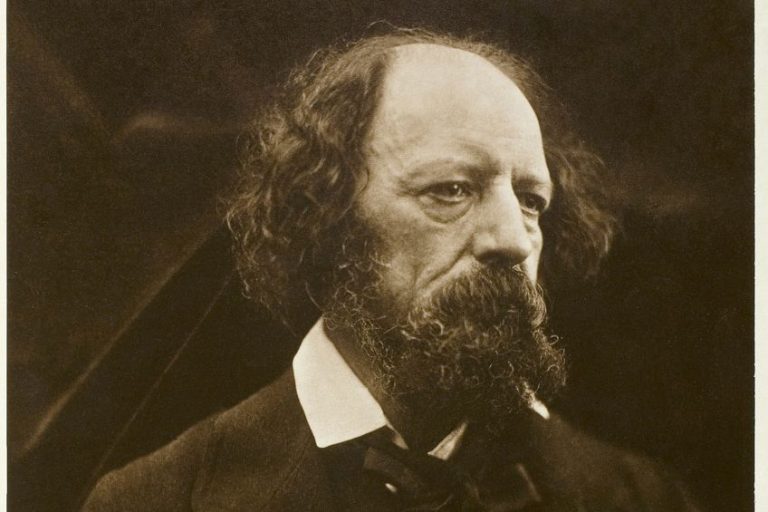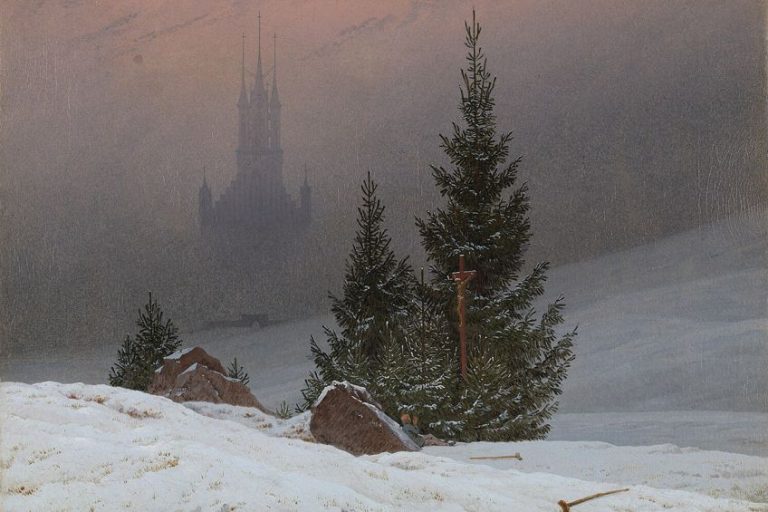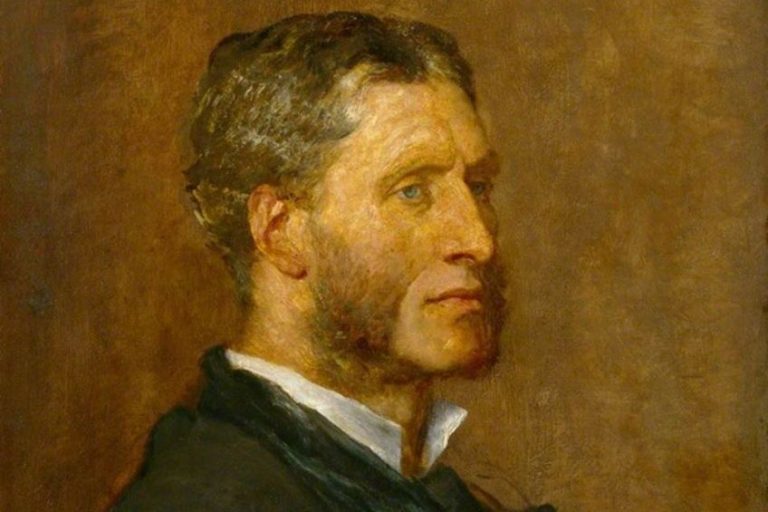Imagery in Poetry – Creating Mental Images With Prose
Do you ever ask yourself: “What is imagery in poetry?”. If you don’t ask yourself this, then this article is probably not for you. However, if you do have this question in mind, then we have some information for you! Today, we will examine this question by looking at a definition of imagery in poetry, the different types of imagery in poetry, the uses and functions of it in poetry and ordinary language, and a few poems with imagery. This should give a good overview of the concept for those who are unfamiliar with it. So, if you want to know about imagery in poetry, you’ve come to the right place. Let’s get this started!
Table of Contents
A Look at Imagery in Poetry
The concept of imagery in poetry is one that is rather common and pervasive. We find imagery in many different types of texts, and it essentially refers to a kind of description of physical things. While the term does imply a view of the visual, this is not always necessarily the case. However, this will be discussed in more detail below. But before we get to any of that, let’s first have a quick stop off at a summary of imagery in poetry.

Summary of Imagery in Poetry
For those who may not have the time to read everything in this article, we have you covered. This is a short and sweet summary of the main points about imagery in poetry. However, to learn more, the rest of the article will be more helpful in general:
- Imagery is the use of mental images in poetry. When it comes to imagery in poetry, it refers to the idea that we can produce a kind of mental picture for the reader to imagine. This is a very basic poetic technique and one that can be found in many examples of poetry.
- Imagery does not refer to sight-based “images” alone. While the word “imagery” does imply that this is purely visual, we can see imagery along the lines of all of the senses. If a smell or sound is described, it can also be seen as a form of imagery in poetry even if it sounds incorrect because of the use of the word “image” within “imagery”.
- Imagery is found outside of poetry too. While imagery in poetry is a very common thing to find, it is hardly unique to poetry. Instead, it can be found in prose and ordinary language too. This is a very common literary technique in general and so it has wide applicability.
And so, we have come to the end of this short summary, but if you want to have a more comprehensive answer to the question, “What is imagery in poetry?”, you will need to keep reading.
There is a lot more that needs to be discussed if you want to have a better understanding of imagery in poetry.
A Definition of Imagery in Poetry
When it comes to the concept of imagery in poetry, it is a rather broad matter. This is not a simple term that has one basic meaning but instead refers to mental “images” that can be created in a poem. These “images” are not necessarily visual in nature though, and this is also what makes the term something of a misnomer. The term “imagery” refers to so much more than sight alone, but we will have a look at some of the different types of imagery in the next section of this discussion.

What should be understood about this poetic device, which is so pervasive that it may not even be termed much of a “device”, is that it is a form of descriptive writing. It is also generally figurative in nature. While a poem might describe something to us in a certain amount of objective detail, this is not generally the sole purpose of imagery.
While imagery certainly can be used to provide the reader with a specific setting, the imagery evoked usually has some kind of a purpose attached to it. In texts that are attempting to be more realist in nature, the imagery may be there solely to set the scene, but this is not all that common in the majority of poetry that is produced.
The “images” mean something for the poem, but we’ll get into all of that soon enough.
The Different Types of Imagery in Poetry
There are not necessarily definitive categories into which imagery can be classified, but there are ways that we can view imagery in poetry to better understand, use, and discuss it. In the most basic terms, we should look at imagery as being detached from the actual word that is used for it. The reason for this is because, as was stated above, “imagery” does not solely have to do with visual “images”.

Instead, we should see imagery as encompassing all of the senses. If a poem describes sights, smells, tastes, sounds, and feelings, then all of these are examples of imagery! If a poem describes these things to us and allows us to create a kind of mental “image” of any of these senses, then that is what imagery is in the first place. Imagery is attempting to set the scene for us, and visuals are far from the only thing that we perceive.
When you think about a cityscape, for instance, you don’t just think about the sights of it all. You think about the noise. Cities are loud. You think about the smells. Cities can often be full of congestion and the scent of street food. Following from that, you may associate the tastes of a city with the kinds of foods you can grab on the side of the road. All of these component parts make up the whole that is the “image” of the city!
You cannot detach any of them from one another because then you will not have the full experience.
So, think of the different types of imagery in poetry as attempting to provide the reader with a complete sensory experience of the world that is being described. There is a reason imagery is so pervasive, and it’s because you can pretty much find it throughout poetry and other forms of writing.
The Uses and Functions of Imagery in Poetry
We have already mentioned some of the potential uses of imagery in poetry, but let’s look at this on its own a little too. What all can imagery do for us in a poem, and why are there so many imagery poems? The reason is because we want to have the world described to us, and we want to see how the poet evokes certain feelings, tastes, touches, smells, and sights. They are all around us, but what do they mean within each poem?

We all experience these things, and we all experience them differently, and so one of the uses of imagery is that it connects us to shared human experience. It can evoke a kind of visceral response, especially when a poem makes use of disturbing images, such as those that are used in An Abandoned Bundle by Oswald Mbuyiseni Mtshali. The use of imagery can provide depth to a poem by adding certain thoughts and feelings that are attached to those mental images. This can come from the atmosphere that is produced through this use of imagery in poetry. We all experience the world in some way, and there are poets out there who can communicate that to us.
The Uses of Imagery Outside Poetry
While imagery can be used throughout poetry, it also has a very real role to play outside of poetry. It has similar purposes in things such as prose texts, like novels. However, imagery is also used in ordinary conversation. Think of someone telling you a story, they have to use imagery of some kind to help set the scene! The same is true of speeches given by political figures. They want to conjure an image of some kind in your head that will get you on their side.
And one of the other areas where imagery can be used outside of poetry is in marketing.
There is so much marketing out there in the world, and to be an effective advert there often needs to be some kind of imagery to try and get us to buy whatever it is they are selling. There are so many different uses for imagery inside and outside of poetry that it can be genuinely difficult to consider each and every single one of them.
A Few Poems With Imagery
When it comes to imagery poems, there are far too many to choose from. Imagery is found in poetry all over the place and distilling it down into a handful of examples is going to be, by its very nature, somewhat reductive. However, let’s have a look at a handful of some notable imagery poems to see how and why they make use of imagery in poetry.

Preludes (1917) by T.S. Eliot
| Date Published | 1917 |
| Type of Poem | Free verse |
| Rhyme Scheme | None |
| Meter | Mostly iambic tetrameter |
| Topic | Modernity |
Preludes is a lengthy poem that makes use of a number of images throughout the entirety of the poem. The poem, as a whole, is concerned with the urban decay that has come about as a result of the modern world. The poem uses images such as the smell of steaks, the sight of the winter sun setting, and the speaker feeling the blanket on their body as they toss it aside. The poem uses these images, which are dark and grimy in their presentation, to portray the urban world as one that is disgusting and isolating.
It is not a pleasant array of images that this T.S. Eliot poem gives to us, but it is a phenomenal example of the kinds of emotions that can be evoked by poems with imagery.

Daddy (1962) by Sylvia Plath
| Date Published | 1962 |
| Type of Poem | Confessional poem |
| Rhyme Scheme | None |
| Meter | None |
| Topic | Fathers and identity |
Daddy is one of the best-known poems by Sylvia Plath, and it is an immensely personal and powerful piece that examines the poet’s own father. Throughout the poem, various images are used to evoke an immensely negative image of her father. These images are vampiric and fascistic in nature, and there are direct comparisons to the Nazis in the imagery used, such as describing him as having a “Meinkampf look”. These startlingly provocative images are meant to do exactly that, they are meant to serve as a way of shocking us and provoking us to have a particular view of this man we have never met.
The imagery used in this poem is some of the most potent ever committed to print, and it paints a very terrible picture.
At Black River (2003) by Mary Oliver
| Date Published | 2003 |
| Type of Poem | Imagery poem |
| Rhyme Scheme | None |
| Meter | None |
| Topic | Humans and nature |
At Black River is one of the many poems that Mary Oliver produced that is concerned with the natural world. In this particular case, the images are not all that pleasant. The poem describes a blackened river. It is portrayed as dark and covered in moss. There are images of “teeth” and “bone” that jut out of it, and the unusual and jutting formal arrangement of the lines in the poem reinforces the image as something more sinister than the usual kind of natural imagery that is evoked by a great many other poems, especially those why Mary Oliver. This shows us that imagery in poetry can be used to present the reader with a simple landscape and allow us to feel what it tells us.
When it comes to the idea of imagery in poetry, there are many examples of poems that make use of this poetic device. It is such a ubiquitous device that it can be found all over the place! However, today, we have had a look at a definition of imagery in poetry, how it is used inside and outside of poetry, some of the different types of poetry, and a number of imagery poems to show how it can be used in a more practical sense. Hopefully, this article has provided a good overview of imagery in poetry, but there are many other poetic techniques and devices out there to learn about!
Frequently Asked Questions
What Is Imagery in Poetry?
This is a term that refers to the use of mental images within poetry. This is essentially a form of description, but it focuses on creating an image of what exists in the real world. This makes imagery in poetry a sensory form of description rather than a mental or psychological type like one might find when focusing on the inner lives of characters.
What Is the Function of Imagery in Poetry?
There are many different functions that imagery in poetry might produce. For instance, it creates a vivid image for us to consider and this can aid in tapping into our emotions or our understanding of human sensory perception. Imagery can also be used to return to some kind of experience or produce a freezeframe in time.
What Are Some Famous Poems With Imagery?
There are far too many imagery poems out there, but some of the best known may be poems such as Preludes (1917) by T.S. Eliot, Daddy (1962) by Sylvia Plath, and At Black River (2003) by Mary Oliver. As stated, there are far more than only these few, but this small selection should be a good way to understand the use of imagery in poetry.
What Are the Different Types of Imagery in Poetry?
While the term imagery implies sight, this is not wholly the case. For instance, imagery in poetry can also refer to mental images created based on any of the senses. This means that imagery in poetry also includes things like the use of sound or touch. It can be used to show how these senses can contribute to the mental images that are produced in the mind of the reader.
Is Imagery Only Found in Poetry?
Imagery is found in far more than only poetry. For instance, it is commonly found in prose, but can also be seen in non-fiction, like journalism and speeches, advertising, and ordinary language. Imagery is far more pervasive than being solely a poetic technique.
Justin van Huyssteen is a freelance writer, novelist, and academic originally from Cape Town, South Africa. At present, he has a bachelor’s degree in English and literary theory and an honor’s degree in literary theory. He is currently working towards his master’s degree in literary theory with a focus on animal studies, critical theory, and semiotics within literature. As a novelist and freelancer, he often writes under the pen name L.C. Lupus.
Justin’s preferred literary movements include modern and postmodern literature with literary fiction and genre fiction like sci-fi, post-apocalyptic, and horror being of particular interest. His academia extends to his interest in prose and narratology. He enjoys analyzing a variety of mediums through a literary lens, such as graphic novels, film, and video games.
Justin is working for artincontext.org as an author and content writer since 2022. He is responsible for all blog posts about architecture, literature and poetry.
Learn more about Justin van Huyssteen and the Art in Context Team.
Cite this Article
Justin, van Huyssteen, “Imagery in Poetry – Creating Mental Images With Prose.” Art in Context. December 5, 2023. URL: https://artincontext.org/imagery-in-poetry/
van Huyssteen, J. (2023, 5 December). Imagery in Poetry – Creating Mental Images With Prose. Art in Context. https://artincontext.org/imagery-in-poetry/
van Huyssteen, Justin. “Imagery in Poetry – Creating Mental Images With Prose.” Art in Context, December 5, 2023. https://artincontext.org/imagery-in-poetry/.









